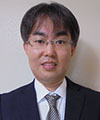Ken Inoue, Yuri Murayama, and Sadayuki Hashioka consider how the two phenomena of natural disasters and overwork death might intersect in Japan
Death by overwork, a phenomenon known as karoshi, has become a major social issue in Japan. The Japanese government formulated a policy in 2015 to try and reduce the number of people who have died as a result of overwork death and overwork suicide (karojisatsu), yet the numbers have remained fairly static.
Last year, for example, Japan’s Ministry of Health, Labour, and Welfare reported that 190 people died from overwork (including overwork suicide) in 2017, which is only one person less than 2016. Approximately half of 2017’s recognised cases of overwork death involved people who had worked more than 100 hours of overtime a month—the so called “karoshi line” that is considered the threshold for linking an employee’s death to overwork.
Natural disaster is another major risk that Japan has frequently confronted in recent decades. Yet it was only in the wake of the overwhelming floods Japan faced last year that early evidence emerged about how these two phenomena (natural disasters and overwork death) might intersect.
In July 2018, Japan experienced torrential downpours that led to widespread flooding, leaving 224 people dead, eight missing, and 459 injured. When a newspaper subsequently surveyed the local governments of the affected areas, they found that 2768 local public service employees (not including managers) in these areas worked more than 100 hours of overtime in the month of the floods. This compares to their finding that only 104 people worked more than 100 hours of overtime in the month of July the previous year.
The stark contrast of these figures underlines how a natural disaster on this scale can magnify the problem of overwork, and create an environment in which people are at risk of exceeding the karoshi line.
Most discussions about the aftermath of a natural disaster focus on the people who have become a victim to its devastation, namely through disaster related death or the physical and mental problems it causes. However, as overwork death continues to be a public health concern for Japan, we’d argue that this problem should also be considered in the context of natural disasters.
Governments and other organisations responding to disasters should bear in mind that during a disaster and in its aftermath, the working hours of local government employees and other workers involved in the response can rapidly exceed the overwork death line (more than 100 hours of overtime a month). Authorities should therefore establish work structures and rest programmes for these employees that prevent their physical and emotional exhaustion and ensure they have sufficient sleep.
The government should take steps to support disaster response efforts with government employees from other areas when needed, and by collaborating with other municipalities, relief agencies, and private sector organisations. This kind of cooperation is important not only for those people directly affected by natural disasters, but also for the workers who are assisting them.
In the wake of natural disasters, the Japanese government must take steps to avoid the secondary tragedy of overwork death.

Ken Inoue is a professor in the Health Care Center, Kochi University, Japan.
Competing interests: None declared.
Yuri Murayama is a psychiatrist in the Department of Public Health, Gunma University, Japan.
Competing interests: None declared.
 Sadayuki Hashioka is an associate professor in the Department of Psychiatry, Faculty of Medicine, Shimane University, Japan. He is also an associate editor of Frontiers in Neuroscience.
Sadayuki Hashioka is an associate professor in the Department of Psychiatry, Faculty of Medicine, Shimane University, Japan. He is also an associate editor of Frontiers in Neuroscience.
Competing interests: None declared.
